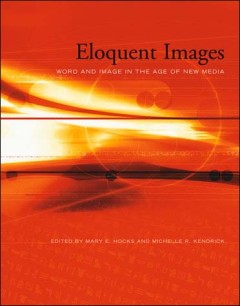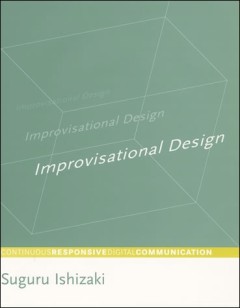Filter by

Eloquent Images: Word and Image in the Age of New Media
The emergence of New Media has stimulated debate about the power of the visual to dethrone the cultural prominence of textuality and print. Some scholars celebrate the proliferation of digital images, arguing that it suggests a return to a pictorial age when knowledge was communicated through images as well as through words. Others argue that the inherent conflict between texts and images creat…
- Edition
- -
- ISBN/ISSN
- 9780262275507
- Collation
- 1 online resource (vi, 318 pages) :illustrations
- Series Title
- -
- Call Number
- -

Improvisational design : continuous, responsive digital communication
Originally presented as the author's thesis (Ph. D.)--MIT, 1985.A theoretical framework for the design of digital communication.Traditional visual design expresses information in fixed forms, such as print or film, so the message can be stored or distributed. With interactive media and continuously updated information, communication entails a new, more dynamic set of design problems. In this bo…
- Edition
- -
- ISBN/ISSN
- 9780262276030
- Collation
- 1 online resource (xi, 155 pages) : illustrations
- Series Title
- -
- Call Number
- 005 ISH i

White sight :visual politics and practices of whiteness
"How whiteness has been constructed, naturalized, and wielded; and how we can unmake it. By a renowned visual culture scholar; grounded in visual and cultural critique, feminism, and the Black radical tradition"--OCLC-licensed vendor bibliographic record.
- Edition
- -
- ISBN/ISSN
- 9780262373104
- Collation
- 1 online resource
- Series Title
- -
- Call Number
- -

Picture-work :how libraries, museums, and stock agencies launched a new image…
"Argues that our contemporary treatment of the image as a circulating object was forged by three 20th century institutions: the museum, the library, and the stock photography agency"--OCLC-licensed vendor bibliographic record.
- Edition
- -
- ISBN/ISSN
- 9780262377041
- Collation
- 1 online resource.
- Series Title
- -
- Call Number
- -

Visualization and interpretation :humanistic approaches to display
"Visusalization argues for the importance of using traditional humanistic methodologies for the interpretation of graphical images (bar graphs, pie charts, network diagrams, etc.)"--OCLC-licensed vendor bibliographic record.
- Edition
- -
- ISBN/ISSN
- 0262361159
- Collation
- 1 online resource.
- Series Title
- -
- Call Number
- -

The infographic :a history of data graphics in news and communications
"The use of infographics is on the rise in newspapers, on television, and on the web. Data visualizations are now ubiquitous in education and corporate life as well. Yet modern communications scholarship has had little to say about this development: the infographic has so far existed on the periphery of communications studies. To date, no serious attempt has been made to explore the historical …
- Edition
- -
- ISBN/ISSN
- 9780262358118
- Collation
- 1 online resource.
- Series Title
- -
- Call Number
- -
 Computer Science, Information & General Works
Computer Science, Information & General Works  Philosophy & Psychology
Philosophy & Psychology  Religion
Religion  Social Sciences
Social Sciences  Language
Language  Pure Science
Pure Science  Applied Sciences
Applied Sciences  Art & Recreation
Art & Recreation  Literature
Literature  History & Geography
History & Geography